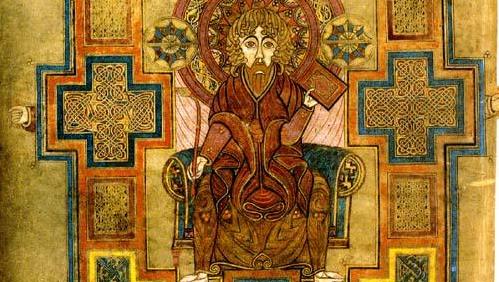While Europe was in chaos during the sixth century, the monks in Ireland were busy preserving Christian faith and culture through art, literature and education.
One of the most influential figures of the time was St. Finnian, who lived between 470–549. It is believed that he studied at one of St. Martin of Tour’s monasteries in Gaul before returning to Ireland to establish his own foundations.
He is most well known for establishing a monastery at Clonard as well as the distant monastery of Skellig Michael. Clonard in particular became a center of Christian education.
According to the Catholic Encyclopedia. Finnian first “built a little cell and a church of clay and wattle, which after some time gave way to a substantial stone structure, and entered on a life of study, mortification, and prayer. The fame of his learning and sanctity was soon noised abroad, and scholars of all ages flocked from every side to his monastic retreat — young laymen and clerics, abbots and bishops.”
Some reports say that at over 3,000 students studied at Clonard at one time, among them the famous, “Twelve Apostles of Ireland.” Included in this number of saints are St. Brendan the Navigator and St. Columba (Colum-cille). St. Columba later established the monastery at Iona, which many believe produced the famous Book of Kells.
These monasteries were havens of culture and faith, protected from the political upheaval in Europe caused by the fall of Rome. According to historian Smith Burnham, “In the earlier part of the Middle Ages the civilization of Ireland was superior to that of England. In art, in music, and in metal work the Irish were unsurpassed. The most beautiful books in all Europe were made in the writing rooms of the Irish monasteries.”
Historian James Hogan had this to say about the role of Ireland:
These centuries [fifth to tenth century] are the golden age of Irish achievement, for then Ireland, inspired by a consciousness of spiritual wealth, broke into the circle of European nations, and giving without stint her best services to mankind, took an effective part in the movement which formed out of a semi-barbaric Europe the stern medieval order. Many of the most ardent and creative spirits that engaged in the work of reconstructing European civilisation were Irishmen.
St. Columba made Iona a centre of learning for Britain. St. Columbanus founded monastic houses all over Europe, and it is difficult to exaggerate the debt which medieval civilisation owed to these monastic houses. Clement, another Irishman, who succeeded Alcuin as head of Charlemagne’s school at Oochen, was world famous. John Scotus Erigena, an Irish monk, was the most original thinker and the dominating intellect of the ninth century. In Irish monasteries Greek was cultivated at a time when it was lost everywhere else in the West. These Irish monks were the first to push open the doors of the Hellenic world, and not till the Renaissance did mankind follow in their train.
The Irish monks were masters of Latin and Greek culture and maintained it through the copying of manuscripts and the passing on of knowledge in various monastic schools throughout Ireland.
It is in this context that the monastery at Skellig Michael was born, a “Golden Age” of Irish monasticism, where faith and culture was preserved for generations to come.

